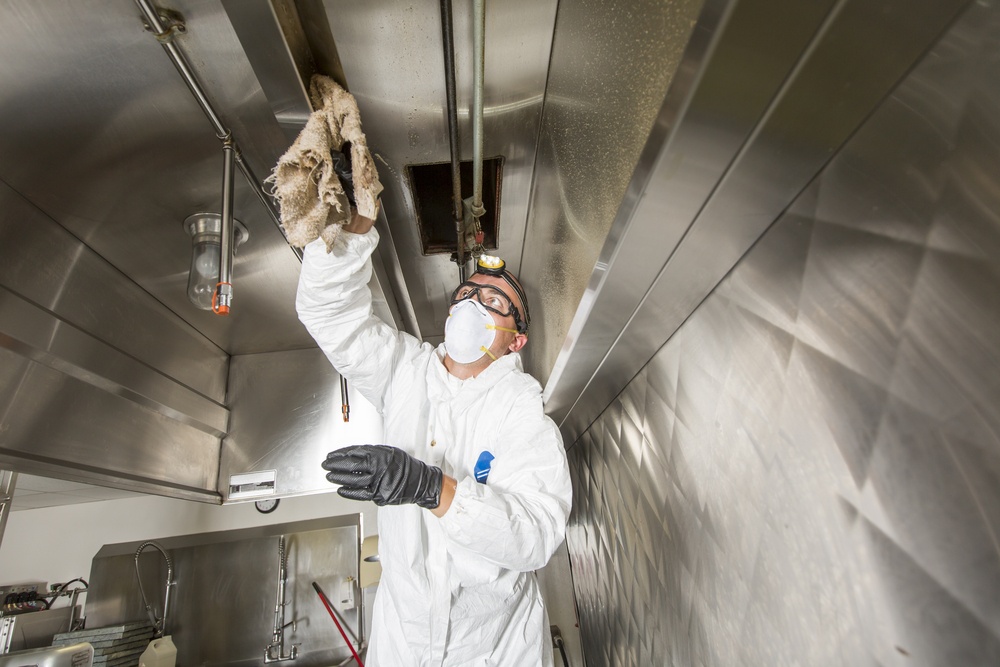What to Be Aware Of When Inspecting Your Commercial Hood
Kitchen ventilation systems are common whether you are considering a food truck or opening a restaurant. Among the most important components of the restaurant hood system is the vent hood.
In most cases, restaurant facilities install a wall-mounted commercial hood vent. There are a couple of categories involved in commercial vent hoods, namely, type 1 and type 2.
Type 1 Hoods
Type 1 hoods are intended for exhaust smoke, vapor, and grease. These components use baffle filters to aid in filtering the air before it goes in the Upblast exhaust fan and ventilation ductwork.
The National Fire Protection Association (NFPA) 96 Standard requires type 1 hoods as do many local codes, insurance companies, and landlords. These are commonly used in open flame cooktops, fryers, wood-burning ovens, and other grease-producing appliances.
However, type 1 commercial hoods quickly become coated with oil and grease, so frequent cleaning is necessary.
Type 2 Hoods
This type is intended for non-grease producing kitchen equipment. This is used to exhaust or dissipate condensation, heat, moisture, and odors. Type 2 hoods neither require hood filters nor frequent cleaning. This is because type 2 commercial vent hoods are required for cooking and dishwashing appliances producing steam or heat.
Commercial Hood Inspection
It is essential to know the technical components of a commercial kitchen exhaust hood to identify the defects. This will also help commercial inspectors to work with specialty contractors or consultants to assist during the inspection.
Exhaust Hood Filters
One of the things that an inspector wants to check is if the exhaust filter is compliant. Here are the most common points to be included:
- Excessive buildup of grease
- Installation of filter should be done correctly
- Evenly-spaced baffles on a baffle filter
- Are baffles missing from the filter?
- Baffle filter bars should run vertically
- The filter should be easily removable or accessible for cleaning
- Note the 45-degree angle where the baffle filters should be installed on the cooktop
- Proper storage of combustibles or fuel near the exhaust system
Water Wash System
The operation of the water wash system must be running smoothly. So the inspector must check for any signs that it isn’t. Common points include the following:
- The service sheet of the manufacturer must be in the control cabinet. Check for the last time the system was serviced, which should be done every 6 months.
- Look for any buildup on any of the connections or pipes at the control cabinet
- Check for grease buildup at the trough of the exhaust hood or the grease catchment box
- Look for visible signs of leaks on the pumps, pipe fittings, and tubing
Fire Extinguishing System
Fire suppression systems are not within the scope of the commercial inspector’s job. However, it is recommended that they have to inspect the fire extinguishing systems. Here are basic inspection details for fire extinguishing:
- Clean fire system
- Proper positioning of nozzles
- Accessible nozzles
- The fire extinguishing system nozzles must be located at the plenum or duct opening. Also, check for the nozzle protective caps if they need replacement.
- There must be no missing parts or breaks at the piping and tubing
- Check the last date of inspection, which is found at the manual pull station.
Other points of interest for the inspector in a commercial hood inspection include the following:
- Exhaust hood dampers
- Exhaust hood lighting
- Commercial building exterior
- Air fan
- Exhaust fan
Knowing the points to identify the different components of the commercial kitchen exhaust system is critical to fire safety, including the health and comfort of the people working in the kitchen.
Exhaust Hood Depot is proud to offer its services Nationwide and to the states of Pennsylvania and Maryland and their major cities and surrounding areas: Philadelphia, Pittsburgh, Harrisburg, Lancaster, Erie, Baltimore, Frederick, Annapolis, and Rockville



